Potrebujeme váš súhlas na využitie jednotlivých dát, aby sa vám okrem iného mohli ukazovať informácie týkajúce sa vašich záujmov. Súhlas udelíte kliknutím na tlačidlo „OK“.
ASTM D2307-07a(2013)
Standard Test Method for Thermal Endurance of Film-Insulated Round Magnet Wire (Includes all amendments And changes 8/17/2021).
Automaticky preložený názov:
Štandardná skúšobná metóda pre tepelnú odolnosť filmu izolovaný guľatý drôt magnetu
NORMA vydaná dňa 1.4.2013
Informácie o norme:
Označenie normy: ASTM D2307-07a(2013)
Poznámka: NEPLATNÁ
Dátum vydania normy: 1.4.2013
Kód tovaru: NS-19985
Počet strán: 9
Približná hmotnosť: 27 g (0.06 libier)
Krajina: Americká technická norma
Kategória: Technické normy ASTM
Kategórie - podobné normy:
Anotácia textu normy ASTM D2307-07a(2013) :
Keywords:
correlation coefficient, linearity, magnet wire, temperature index, thermal endurance, ICS Number Code 29.060.10 (Wires)
Doplňujúce informácie
| Significance and Use | ||||||||||||
|
5.1 This test method is useful in determining the thermal endurance characteristics and thermal indices of film-insulated round magnet wire in air (see 5.2 Experience has shown that film-insulated wire and electrical insulating varnishes or resins can affect one another during the thermal exposure process. Test Method D3251 provides indications on the thermal endurance for a combination of insulating varnish or resin and film insulated wire. It is possible that interaction between varnish or resin and film insulation will increase or decrease the relative thermal life of the varnish and film insulated wire combination compared with the life of the film insulated wire tested without varnish. 5.3 The conductor type or the surface condition of the conductor will affect the thermal endurance of film-insulated magnet wire. This test method is used to determine the thermal endurance characteristics of film insulation on various kinds of conductors. The use of sizes other than those specified in 7.1.1 is permissible but is not recommended for determining thermal endurance characteristics. 5.4 The temperature index determined by this test method is a nominal or relative value expressed in degrees Celsius at 20 000 h. It is to be used for comparison purposes only and is not intended to represent the temperature at which the film insulated wire could be operated. 5.5 There are many factors that influence the results obtained with this test method. Among the more obvious are the following: 5.5.1 Wire size and film thickness. 5.5.2 Moisture conditions during proof voltage tests. 5.5.3 Oven construction: 5.5.3.1 Velocity of air. 5.5.3.2 Amount of replacement air. 5.5.3.3 Elimination of products of decomposition during thermal exposure. 5.5.3.4 Oven loading. 5.5.3.5 Accuracy with which the oven maintains temperature. 5.5.4 In most laboratories, the number of thermal endurance ovens is limited and, therefore, many different sets of specimens are thermally exposed in the same oven. All specimens are not necessarily removed each time the oven is opened. This extra temperature cycling will possibly have a degrading influence. 5.5.5 Care with which specimens are handled, especially during latter cycles when the insulation becomes brittle. 5.5.6 Vibration of specimens will have a degrading effect during the later thermal endurance cycles. 5.5.7 Electrical characteristics of dielectric test instrument. Refer to 8.4 and 8.5. 5.5.8 Environmental factors such as moisture, chemical contamination, and mechanical stresses, or vibration are factors that will possibly result in failure after the film insulated wire has been weakened by thermal deterioration and are more appropriately evaluated in insulation system tests. |
||||||||||||
| 1. Scope | ||||||||||||
|
1.1 This test method covers determination of the thermal endurance of film-insulated round magnet wire in air at atmospheric pressure. It is not applicable to magnet wire with fibrous insulation, such as cotton or glass. 1.2 This test method covers the evaluation of thermal endurance by observing changes in response to ac proof voltage tests. The evaluation of thermal endurance by observing changes in other properties of magnet wire insulation requires the use of different test methods. 1.3 It is possible that exposure of some types of film insulated wire to heat in gaseous or liquid environments in the absence of air will give thermal endurance values different from those obtained in air. Consider this possibility when interpreting the results obtained by heating in air with respect to applications where the wire will not be exposed to air in service. 1.4 It is possible that electric stress applied for extended periods at a level exceeding or even approaching the discharge inception voltage will change significantly the thermal endurance of film insulated wires. Under such electric stress conditions, it is possible that comparisons between materials will also differ from those developed using this method. 1.5 This test method is similar to IEC 60172. Differences exist regarding specimen preparation. 1.6 The values stated in inch-pound units are to be regarded as the standard. The SI units in parentheses are provided for information only. 1.7 This standard does not purport to address all of the safety concerns, if any, associated with its use. It is the responsibility of the user of this standard to establish appropriate safety and health practices and determine the applicability of regulatory limitations prior to use. |
||||||||||||
| 2. Referenced Documents | ||||||||||||
|
Podobné normy:
Historická
15.10.2012
Historická
15.10.2012
Historická
1.10.2010
Historická
1.4.2014
Historická
1.9.2013
Historická
15.10.2012
Odporúčame:
Aktualizácia technických noriem
Chcete mať istotu, že používate len platné technické normy?
Ponúkame Vám riešenie, ktoré Vám zaistí mesačný prehľad o aktuálnosti noriem, ktoré používate.
Chcete vedieť viac informácií ? Pozrite sa na túto stránku.


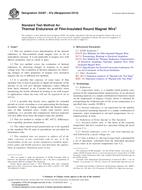
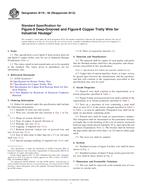 ASTM B116-95(2012)..
ASTM B116-95(2012)..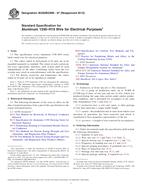 ASTM B230/B230M-07(2..
ASTM B230/B230M-07(2..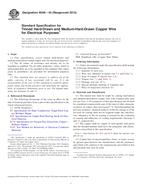 ASTM B246-05(2010)..
ASTM B246-05(2010)..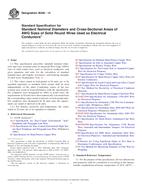 ASTM B258-14
ASTM B258-14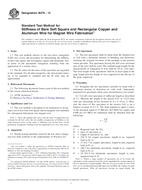 ASTM B279-13
ASTM B279-13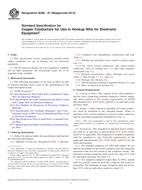 ASTM B286-07(2012)..
ASTM B286-07(2012)..
 Cookies
Cookies
